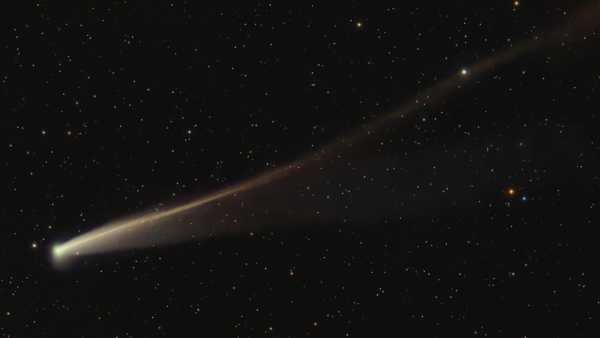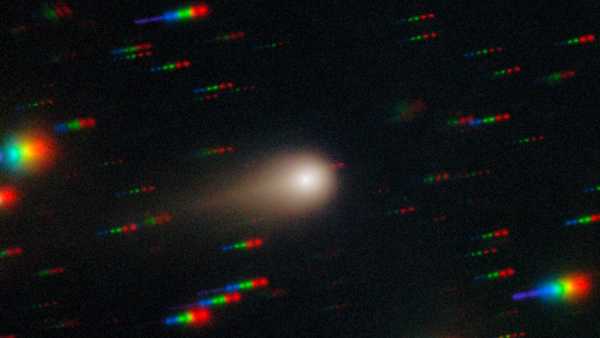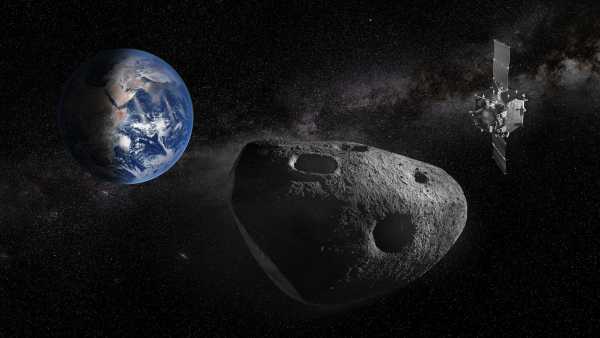
Illustration of ESA's RAMSES spacecraft approaching the potentially hazardous asteroid Apophis before its close approach to Earth in 2029. (Image credit: ESA Science Office)
When the potentially hazardous asteroid 99942 Apophis flies past Earth on April 13, 2029, more than 2 billion people in Africa and Western Europe will be able to watch it pass across the night sky. On a clear day, the asteroid will appear as a faint star – about as bright as the stars of the Big Dipper, and easily visible to the naked eye – gliding past us.
The Apophis flyby will be “the first time in cosmic history that a potentially hazardous asteroid will be visible to the naked eye,” Richard Binzel, a professor of planetary science at the Massachusetts Institute of Technology, said Monday (Sept. 8) during a keynote address at the European Planetary Science Congress in Helsinki, Finland. Astronomers estimate that a close approach by an asteroid of this size — 1,140 feet (340 meters) in diameter, about the height of the Eiffel Tower — happens only once every 7,500 years.
For the public, it will be a dazzling, once-in-a-lifetime spectacle. For scientists, it promises something even rarer: a natural experiment unique in a millennium, allowing them to watch in real time how Earth’s gravity is changing the shape of a huge asteroid. “We don’t know,” Binzel said, “and we won’t know until we look.”
You may like
-
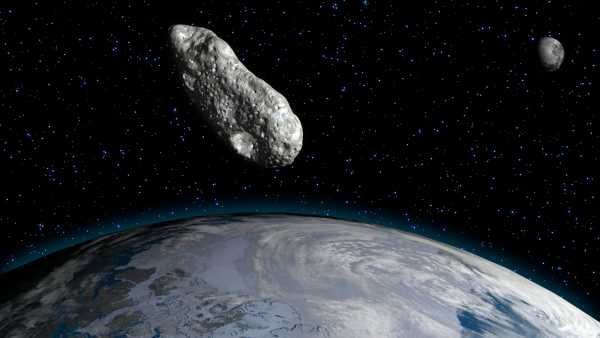
A newly discovered bus-sized asteroid will fly past Earth today and will not return for exactly 100 years.
-
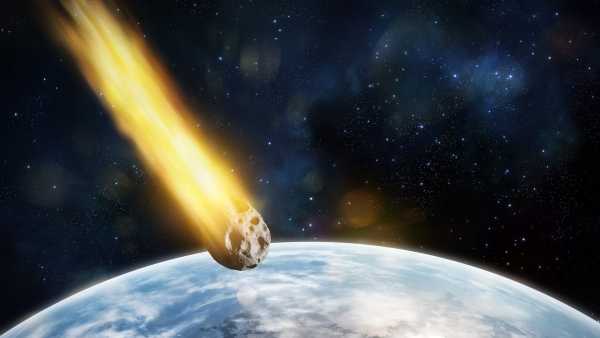
James Webb Telescope Raises Odds 'City Killer' Asteroid 2024 YR4 Will Hit Moon in 2032
-
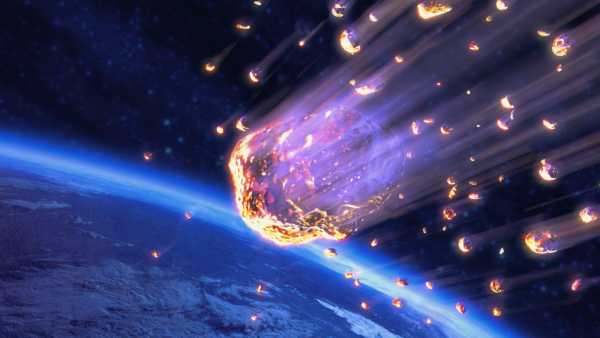
Asteroid 2024 YR4, the 'city killer', could shower Earth with bullet-shaped meteors if it collides with the Moon in 2032.
Binzel, a pioneer in asteroid hazard research and creator of the Torino Asteroid and Comet Impact Hazard Scale, emphasized one important point: “If you take nothing else away from this talk, I want you to take three things away,” he said during his talk. “Apophis will safely miss the Earth; Apophis will safely miss the Earth; Apophis will safely miss the Earth.”
But when Apophis was first discovered in 2004, the picture was far less certain. Initial calculations suggested a 2.7% chance of an impact on April 13, 2029, which would have placed it at level 4 on the Torino scale, the highest rating ever given to a near-Earth object. Scientists named the asteroid 99942 Apophis after the Egyptian god of the underworld, giving it the nickname “the chaos asteroid.”
Over the next two decades, continuous tracking and radar observations narrowed Apophis’s orbit from hundreds of miles of uncertainty to just a few. By 2021, Apophis had officially been removed from all risk lists, with scientists estimating that it posed no threat for at least the next 100 years. However, last September, a study noted that there was still a tiny chance that an unknown asteroid could nudge it onto a collision course before its close flyby of Earth in 2029. The odds are more than one in a billion, and while scientists won’t be able to completely rule out that scenario for the next three years, astronomers remain confident that Apophis poses no threat for the next century.
“A lot of people have done a lot of work to make sure that we can say with complete confidence that Apophis will safely fly by Earth – there is no doubt about that,” Binzel said.
“The Earth won't care, but Apophis won't care.”
While Earth itself is unlikely to notice the impact, Apophis will not leave the asteroid untouched. Passing just over 18,000 miles above the planet’s surface — closer than geostationary satellites — its Aten-class orbit, which lies mostly inside Earth’s path around the sun and is therefore often hidden in our star’s glare, will change shape to a wider Apollo-class trajectory. Its spin may also change, potentially sending the asteroid into another tumble, Binzel said.
“Earth won't care, but Apophis won't care because its orbit will change,” he said. “It's all about the physics of the collision.”

An illustration of a potentially hazardous asteroid approaching Earth.
To capture these changes firsthand, NASA has repurposed its OSIRIS-REx spacecraft, which recently completed a mission to asteroid Bennu, for a new role: OSIRIS-APEX. The probe will rendezvous with Apophis before the flyby, map its surface, track its rotation, and measure how Earth’s gravity affects the asteroid during its close flyby. Among the most tantalizing goals, Binzel says, is the ability to measure seismic vibrations inside Apophis.
“In 60 years of planetary science, we have measured seismicity on only two objects: the Moon and Mars,” he said. “This would open the door to another leap in seismic measurements and interpretation of subsurface properties.”
The jump could be made through the Rapid Apophis Mission for Space Safety (RAMSES) programme. The European Space Agency (ESA) mission, if approved by the ESA Council of Ministers in November, would launch in spring 2028 and reach the asteroid by February 2029. The mission’s goal is to observe Apophis before, during and after its flyby of Earth, Monica Lazzarin, a professor of physics and astronomy at the University of Padova in Italy and a member of the RAMSES scientific team, told the conference.
During its encounter with the asteroid on April 12-14, 2029, RAMSES will be just 3 miles (5 kilometers) away and will map Apophis' orbit, look for tidal-lifted dust clouds, and possibly deploy a small satellite called a CubeSat that will touch its surface and detect seismic waves, Lazzarin said.
RELATED STORIES
— The “potentially hazardous” asteroid Bennu contains dust that is older than the solar system itself and traces of interstellar space.
— Giant space “boulders” released by NASA's DART mission are not behaving as expected, revealing hidden risks of asteroid deflection.
— Astronomers have discovered a potential “interstellar visitor” flying through the solar system toward Earth.
Beyond science, scientists say Apophis is a testing ground for planetary defense, as it will help humanity understand and prepare for the rare but real risk of an asteroid strike. While Apophis itself poses no danger, it is part of a class of near-Earth asteroids that could one day pose a threat to our planet. By studying how Earth’s tidal forces alter Apophis’s shape, scientists can improve the models needed to deflect a dangerous asteroid.
“Apophis is not a planetary defense emergency,” added Tom Statler, a planetary scientist at NASA Headquarters in Washington, D.C., during a question-and-answer session at the conference. “It’s an opportunity, and an unprecedented one.”
“Asteroids are not something to be afraid of,” he added. “They are something to be understood, and that's what we're doing.”

Sharmila Kuthunur, Social Links Navigation, Live Science Contributor
Sharmila Kuthunur is a Seattle-based science journalist who specializes in astronomy and space exploration. Her work has also appeared in Scientific American, Astronomy, and Space.com, among other publications. She holds a master’s degree in journalism from Northeastern University in Boston. Follow her on BlueSky @skuthunur.bsky.social.
You must verify your public display name before commenting.
Please log out and log back in. You will then be prompted to enter a display name.
Exit Read more
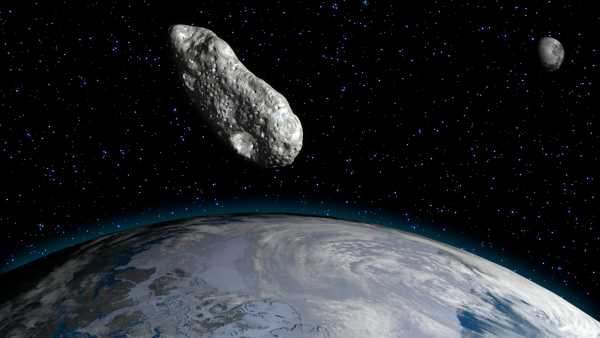
A newly discovered bus-sized asteroid will fly past Earth today and will not return for exactly 100 years.
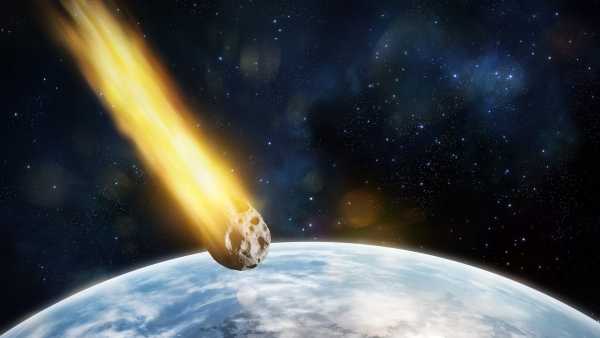
James Webb Telescope Raises Odds 'City Killer' Asteroid 2024 YR4 Will Hit Moon in 2032
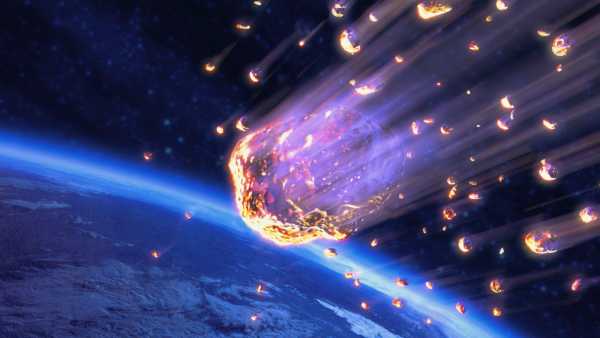
Asteroid 2024 YR4, the 'city killer', could shower Earth with bullet-shaped meteors if it collides with the Moon in 2032.
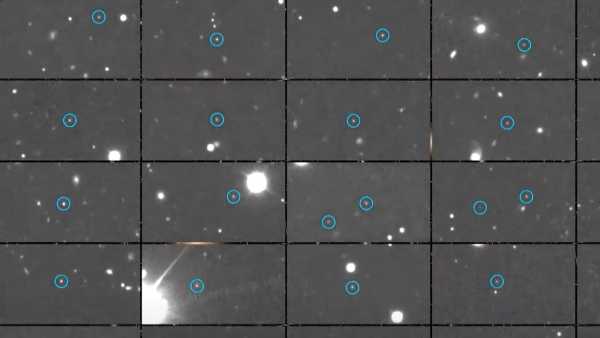
The Rubin Observatory has discovered 2,104 asteroids in just a few days. It could soon find millions more.
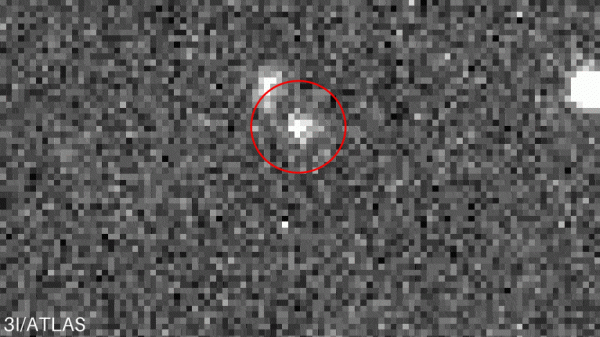
Astronomers are rushing to study our solar system's newest “interstellar visitor.” Here's why.
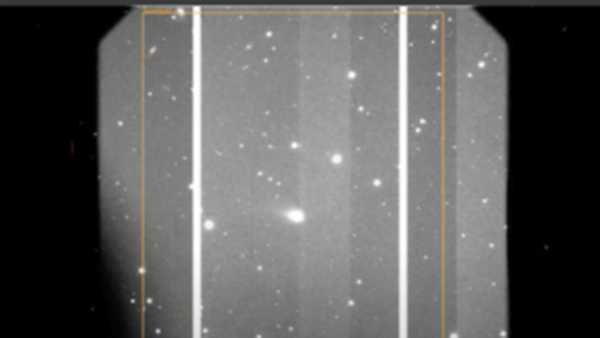
I watched scientists observe the interstellar comet 3I/ATLAS in real time. This is what they saw.
Latest Asteroid News
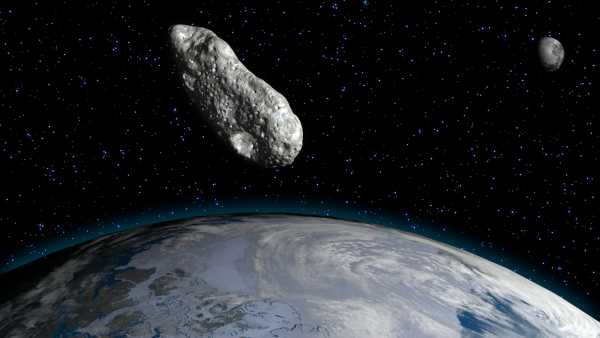
A newly discovered bus-sized asteroid will fly past Earth today and will not return for exactly 100 years.
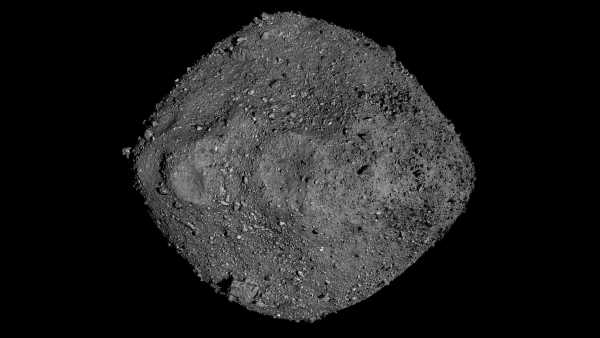
The Bennu sample contains dust that is older than the solar system itself.
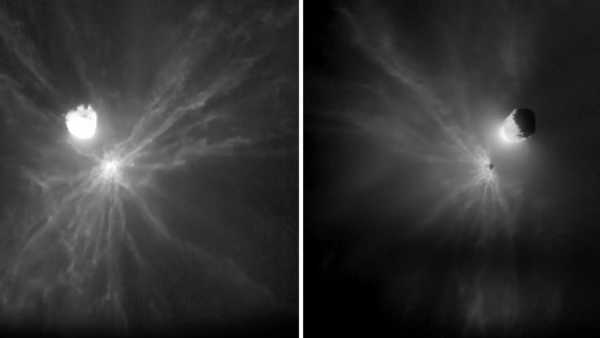
Giant space 'boulders' released by NASA's DART mission are not behaving as expected, revealing hidden risks of asteroid deflection.

Astronomers have discovered a potential 'interstellar visitor' flying through the solar system towards Earth.
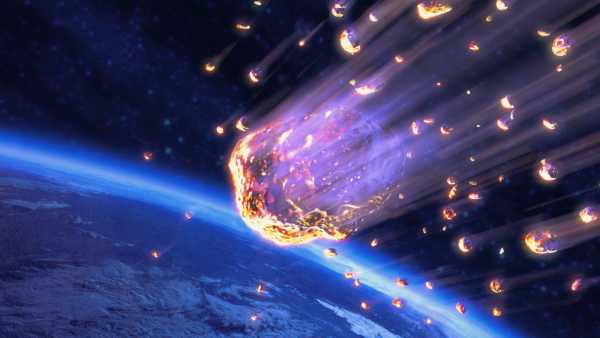
Asteroid 2024 YR4, the 'city killer', could shower Earth with bullet-shaped meteors if it collides with the Moon in 2032.
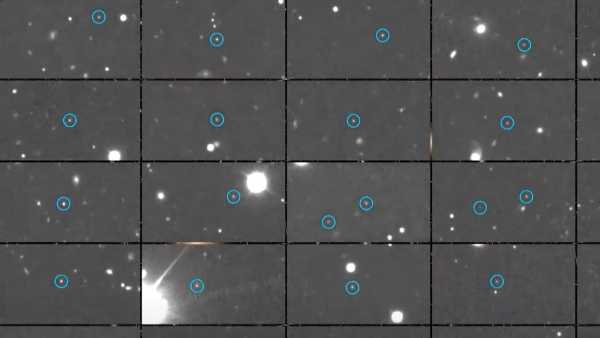
The Rubin Observatory has discovered 2,104 asteroids in just a few days. It could soon find millions more.
Latest news
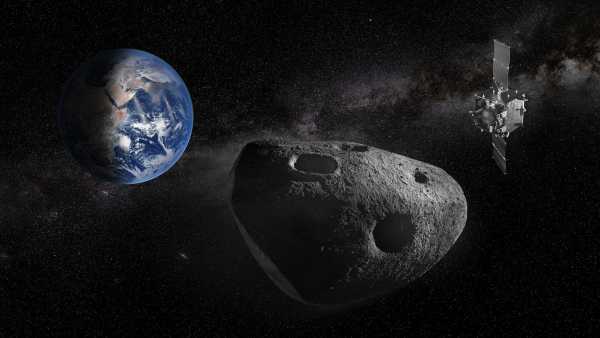
Asteroid Apophis flyby will be a 'once in a millennium' opportunity for skywatchers and scientists
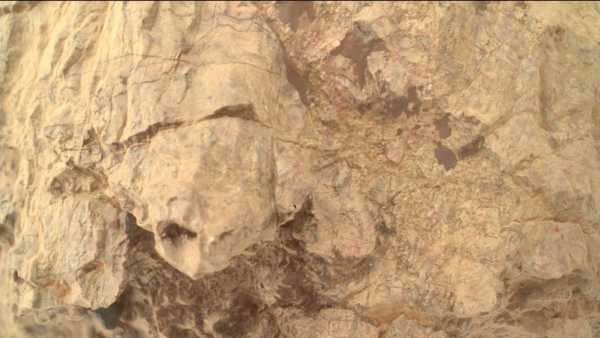
NASA Rover Discovers Strange 'Turtle' Hiding Among Ancient Rocks on Mars

Human Stem Cells Become More Active in Space—And That's Not Good
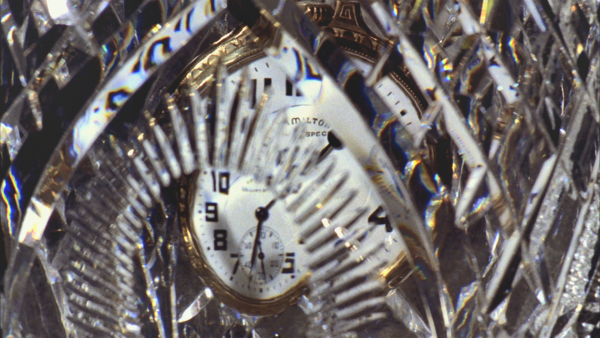
Scientists have created the first-ever visible time crystals using light — and they could one day appear on $100 bills.
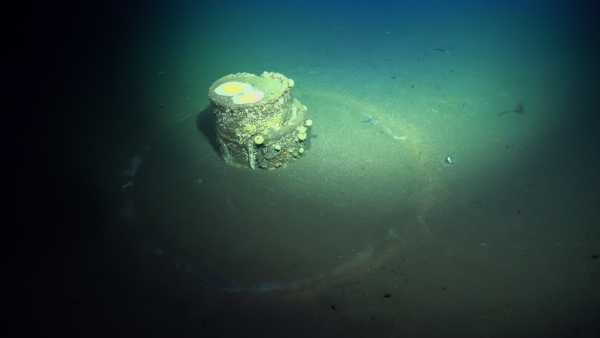
Scientists Finally Know What's Inside Mysterious 'Halo' Barrels Sunken Off Los Angeles Coast
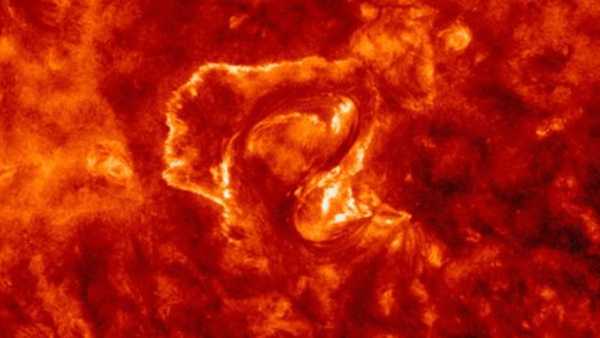
Giant 'S' shape spotted on Sun just before 'dark eruption' casts fiery shadow on Earth
LATEST ARTICLES

1″We have effectively destroyed all our capacity to respond to a pandemic,” says leading epidemiologist Michael Osterholm.
Live Science is part of Future US Inc., an international media group and leading digital publisher. Visit our corporate website.
- About Us
- Contact Future experts
- Terms and Conditions
- Privacy Policy
- Cookie Policy
- Accessibility Statement
- Advertise with us
- Web Notifications
- Career
- Editorial Standards
- How to present history to us
© Future US, Inc. Full 7th Floor, 130 West 42nd Street, New York, NY 10036.
var dfp_config = { “site_platform”: “vanilla”, “keywords”: “type-news-daily,serversidehawk,videoarticle,van-enable-adviser-
Sourse: www.livescience.com



